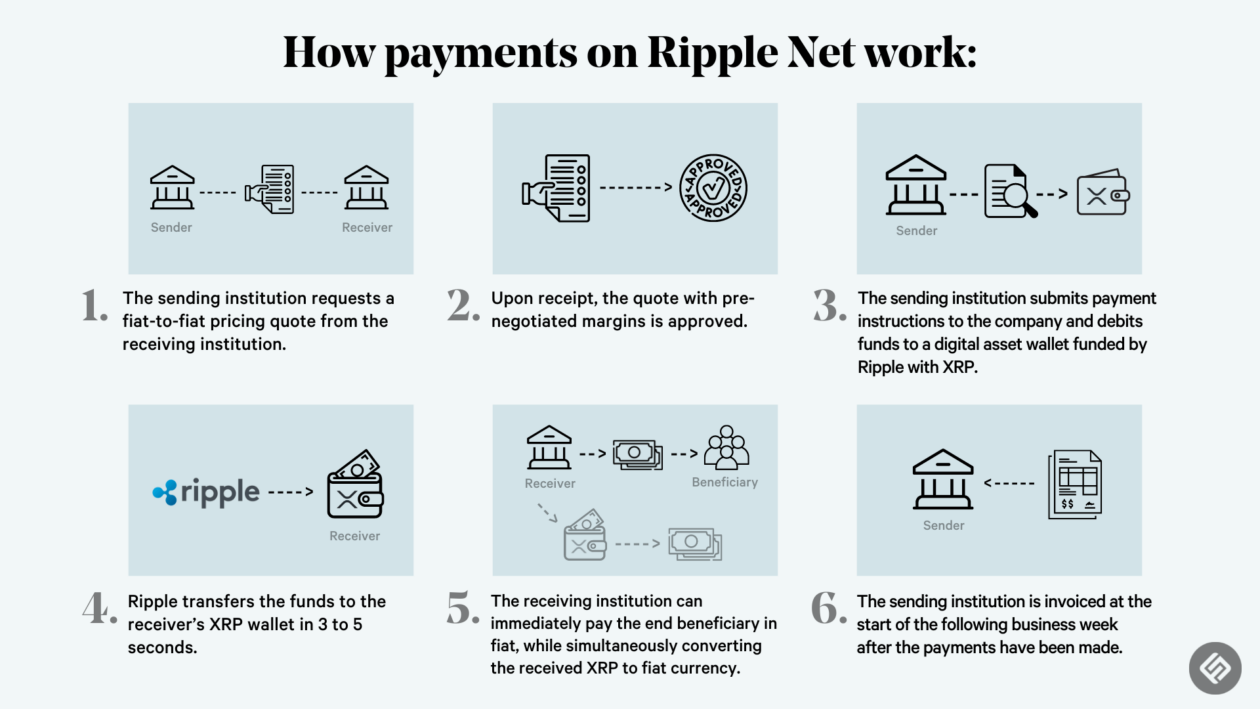Ripple XRP

Ripple, a prominent name in the blockchain and cryptocurrency space, has established itself as a global leader in providing financial institutions with innovative solutions for cross-border payments. At the heart of this ecosystem lies XRP, a digital asset that plays a crucial role in facilitating seamless and efficient transactions.
The Genesis of Ripple and XRP, Ripple xrp
Ripple, the company behind XRP, was founded in 2011 by Jed McCaleb and Chris Larsen. Initially envisioned as a decentralized payment network, Ripple aimed to revolutionize the traditional financial system by offering a faster, more cost-effective, and transparent alternative for international transactions.
The company developed XRP, a cryptocurrency designed to act as a bridge currency within the Ripple network. XRP’s unique design and functionalities distinguish it from other cryptocurrencies, making it a valuable asset for various applications.
The Role of XRP in the Ripple Network
XRP serves as a key component of the Ripple network, enabling rapid and low-cost cross-border payments. It functions as a bridge currency, facilitating transactions between different fiat currencies. When a financial institution initiates a transaction using XRP, it converts its local currency into XRP, which is then sent to the recipient’s bank. The recipient then converts the XRP back into their local currency.
This process eliminates the need for traditional intermediaries, such as correspondent banks, significantly reducing transaction times and costs. XRP’s speed and efficiency make it an attractive alternative to traditional payment methods, particularly for businesses and individuals involved in international trade.
Technical Aspects of XRP
XRP employs a unique consensus mechanism called the “Ripple Consensus Ledger” (RCL), which differs from traditional blockchain consensus models. The RCL relies on a network of trusted validators known as “Unique Node Lists” (UNLs). These UNLs are maintained by financial institutions that participate in the Ripple network, ensuring the integrity and security of transactions.
Unlike proof-of-work or proof-of-stake consensus mechanisms, the RCL does not require extensive computational power or energy consumption. This makes XRP transactions significantly faster and more energy-efficient than other cryptocurrencies.
Transaction Speed and Scalability
XRP transactions can be processed in a matter of seconds, significantly faster than traditional payment systems or other cryptocurrencies. The RCL’s design allows for high throughput, enabling the network to handle a large volume of transactions simultaneously. This scalability is crucial for meeting the demands of financial institutions and businesses that require rapid and efficient cross-border payments.
Ripple and Regulatory Landscape: Ripple Xrp

The regulatory landscape for cryptocurrencies is constantly evolving, and Ripple and its native token XRP have faced significant scrutiny from regulators worldwide. The company’s business model and XRP’s unique characteristics have led to a complex legal situation, particularly in the United States.
SEC Lawsuit Against Ripple
The Securities and Exchange Commission (SEC) filed a lawsuit against Ripple Labs in December 2020, alleging that Ripple sold XRP as an unregistered security. The SEC claims that XRP sales constitute an “investment contract,” meaning investors expected profits generated by Ripple’s efforts. This lawsuit has had a significant impact on the cryptocurrency market, raising questions about the regulatory status of other cryptocurrencies.
The lawsuit’s implications extend beyond Ripple. The SEC’s definition of a security could potentially apply to other cryptocurrencies, creating uncertainty for the entire industry. This has led to increased regulatory scrutiny and legal challenges for other crypto projects.
The SEC’s case against Ripple is ongoing, and the outcome could have significant implications for the cryptocurrency market. If the SEC prevails, it could set a precedent for regulating other cryptocurrencies as securities, potentially hindering innovation and growth in the industry.
Global Regulatory Environment for Cryptocurrencies
The regulatory landscape for cryptocurrencies varies significantly across the globe. Some countries, such as Japan and Switzerland, have embraced cryptocurrencies and established clear regulatory frameworks. Others, such as China, have taken a more restrictive approach, banning cryptocurrency trading and mining.
Many countries are still developing their regulatory frameworks for cryptocurrencies. The lack of clear and consistent regulations creates uncertainty for businesses and investors, hindering the growth of the industry.
“The regulatory landscape for cryptocurrencies is a complex and evolving area, and it is essential for businesses and investors to stay informed about the latest developments.”
Here are some examples of different regulatory approaches to cryptocurrencies globally:
- United States: The SEC has taken a more cautious approach to cryptocurrencies, classifying some as securities and regulating them accordingly. The Financial Crimes Enforcement Network (FinCEN) has also issued guidance on anti-money laundering (AML) and know-your-customer (KYC) requirements for cryptocurrency businesses.
- European Union: The EU is developing a comprehensive regulatory framework for cryptocurrencies through the Markets in Crypto-Assets (MiCA) regulation. MiCA aims to provide a harmonized regulatory approach for cryptocurrencies within the EU.
- Japan: Japan has embraced cryptocurrencies and established a robust regulatory framework for cryptocurrency exchanges. The Financial Services Agency (FSA) licenses cryptocurrency exchanges and regulates their operations.
- Singapore: Singapore has adopted a more progressive approach to cryptocurrencies, establishing a regulatory sandbox for fintech companies, including those operating in the cryptocurrency space.
Yo, Ripple XRP, it’s like the future of money, right? But sometimes, it feels like we’re just waiting for it to really take off, like that empty chair at the table, a reminder of what could be. But hey, we gotta keep the faith, right?
Maybe one day, XRP will be the king of crypto, and we’ll all be sitting at that table, celebrating the good times.
Yo, Ripple XRP is like the new hotness, everyone’s talking about it. It’s all about blockchain tech, ya know, the future. But sometimes I think about those classic Beetlejuice Beetlejuice popcorn buckets you know, the ones with the stripes , and how they were the OG hype.
Anyway, back to XRP, it’s got potential, we’ll see what happens, right?
